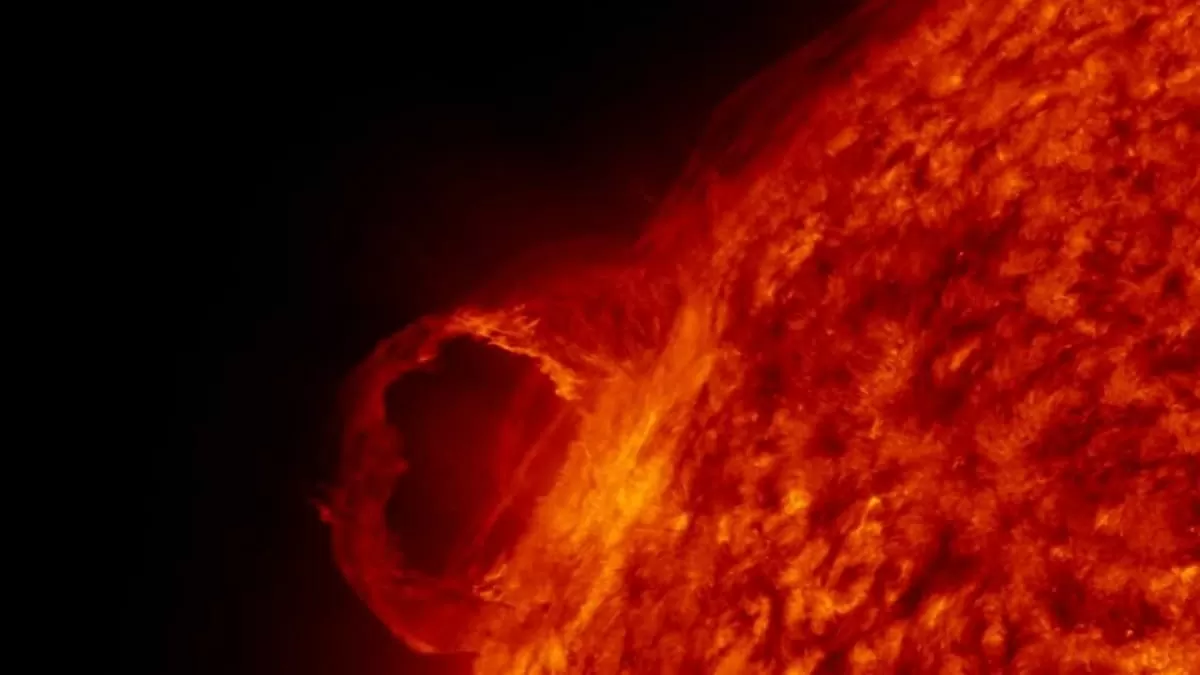Scientists have always been fascinated by the power and mysteries of the sun. From its life-giving warmth to its occasional bursts of solar flares, the sun has always been a source of wonder and awe. However, recent research has uncovered evidence of past solar storms that were far more extreme than anything we have experienced in modern times.
One such event was the Carrington event of 1859, which disrupted telegraph systems across Europe and North America. This event, named after British astronomer Richard Carrington who observed it, was caused by a massive solar flare that sent a surge of charged particles towards Earth. The resulting geomagnetic storm caused widespread disruptions in telegraph systems, leading to sparks and fires in some cases.
But now, scientists have discovered evidence of even more extreme solar storms in the past. By studying radiocarbon levels in tree rings, researchers like Fusa Miyake have identified ancient solar events that were much more powerful than the Carrington event. In fact, one such event in AD774 was so massive that it dwarfed the Carrington event in comparison.
The discovery of these ancient solar storms has shed new light on the true power of the sun and its potential to cause havoc on Earth. It also raises important questions about how we can prepare for such events in the future.
The study of tree rings, also known as dendrochronology, has been a valuable tool for scientists in understanding past climate events. By analyzing the levels of radiocarbon in tree rings, researchers can determine the amount of cosmic rays that reached Earth in a particular year. Cosmic rays are high-energy particles that originate from outside our solar system and can be used as a proxy for solar activity.
In the case of the AD774 solar storm, researchers found a significant spike in radiocarbon levels in tree rings from that year. This indicates that a massive burst of cosmic rays reached Earth, most likely caused by a powerful solar flare. The intensity of this event was estimated to be 10 times greater than the Carrington event, making it one of the most extreme solar storms in recorded history.
But what makes this discovery even more remarkable is that there is no record of any major disruptions or disasters during that time period. This suggests that our ancestors were able to weather this storm without any major consequences. However, if a similar event were to occur in modern times, the consequences could be catastrophic.
Our modern society is heavily reliant on technology, from communication systems to power grids. A solar storm of the magnitude of the AD774 event could potentially cause widespread blackouts, disrupt satellite communications, and even damage critical infrastructure. This highlights the need for better preparedness and mitigation strategies to minimize the impact of such events.
The discovery of these ancient solar storms also raises questions about the frequency of such extreme events. While the Carrington event was a once-in-a-century occurrence, the AD774 event suggests that such events may happen more frequently than we previously thought. This highlights the importance of continued research and monitoring of solar activity to better understand and predict these events.
But it’s not all doom and gloom. The study of these ancient solar storms also provides valuable insights into the sun’s behavior and its impact on Earth. By studying these events, scientists can better understand the mechanisms behind solar flares and improve our ability to forecast and prepare for future events.
In conclusion, the discovery of past solar storms that were more extreme than the well-known Carrington event of 1859 is a testament to the power and unpredictability of the sun. By studying radiocarbon levels in tree rings, researchers have uncovered evidence of a massive solar storm in AD774 that dwarfed the Carrington event. This discovery highlights the need for better preparedness and mitigation strategies to minimize the impact of such events in the future. It also emphasizes the importance of continued research and monitoring of solar activity to better understand and predict these events. The sun may be a source of wonder and awe, but it is also a powerful force that we must learn to respect and prepare for.

